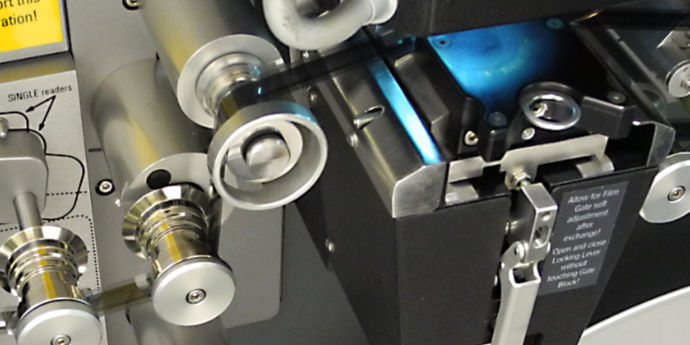With the video file of Marianne stabilised, dust-busted and awaiting only level adjustments, it’s time to turn attention to the soundtrack and the improvements which can be made there.
An initial analysis of the soundtrack, scanned on a Spirit Datacine at Cutting Edge in Brisbane, was covered in an earlier post Assessing the Scans Part 4 — Soundtrack. In that post I noted the limited frequency range and the noise from film grain, dust, scratches and splices.
My goals with restoration of the soundtrack are:
-
Remove hum which is present throughout most of the recording, although it fluctuates depending on the audio source, the microphone that was being used in each particular shot, and so on.
-
Remove or reduce intrusive and unwanted noises which occurred on the set.
-
Remove or reduce spurious noises occurring as a result of film damage, repairs, etc.
-
Boost the high frequencies without introducing an excessive amount of noise.
16mm optical soundtracks by their nature have limited frequency response and quite a lot of distortion, so we can’t expect too much.
Choice of Restoration Tools
iZotope RX is a professional audio restoration tool which I use for all restoration work. It allows repairs with surgical precision in both the time and frequency domains and is ideal for cleaning up transfers from disc (e.g. LPs) or tape and will do a good job with this soundtrack also.
Restoration Strategy
The restoration steps are:
-
Firstly remove the 50Hz hum (and often higher harmonics too).
-
Then review the soundtrack again and remove spurious noises.
-
Finally add some eq to boost the high frequences.
Because the soundtrack needs to keep frame-perfect synchronisation with the video, removing unwanted artefacts by deleting segments of the audio, a commonly used technique for a purely audio track, won’t be an option here.
